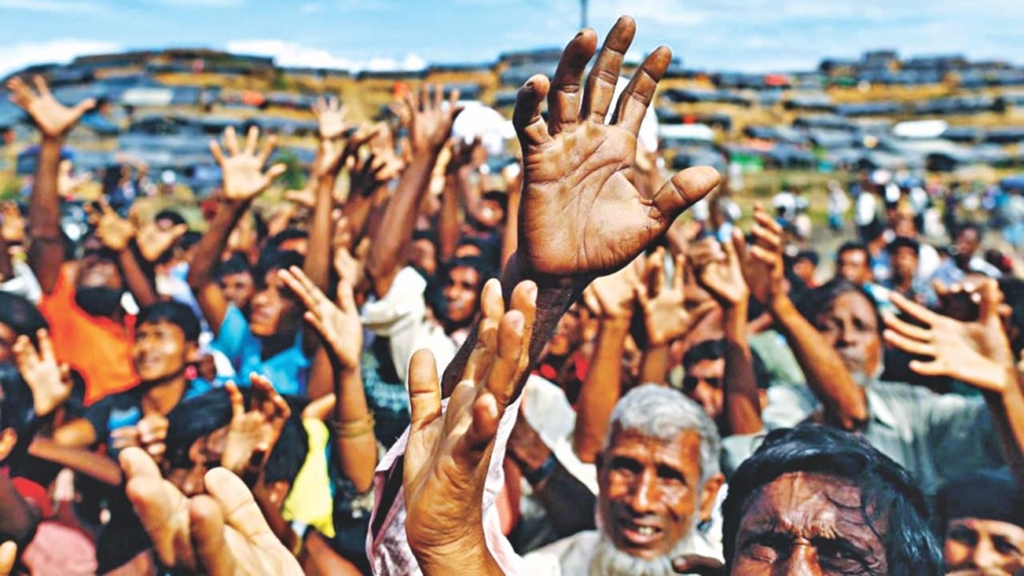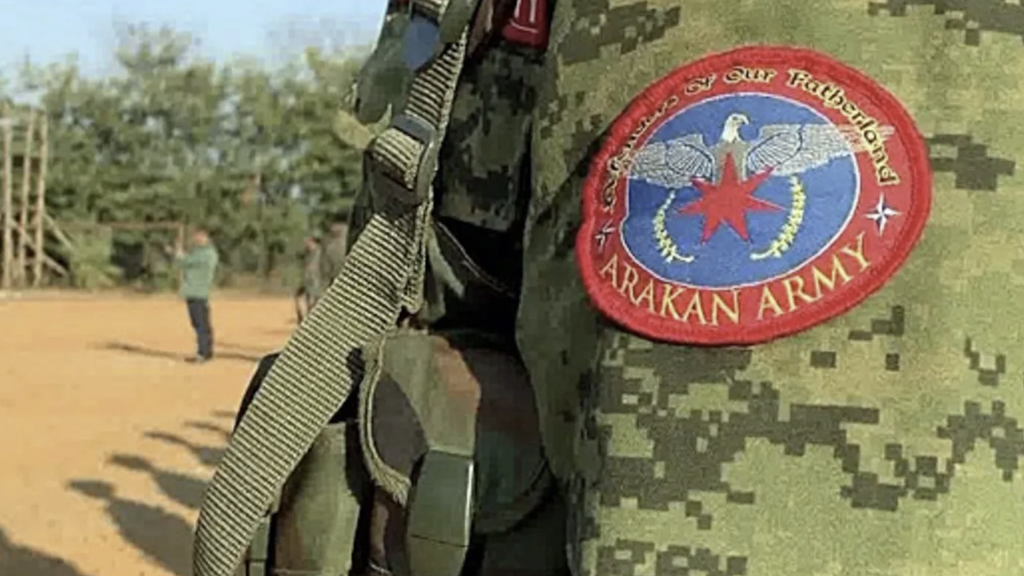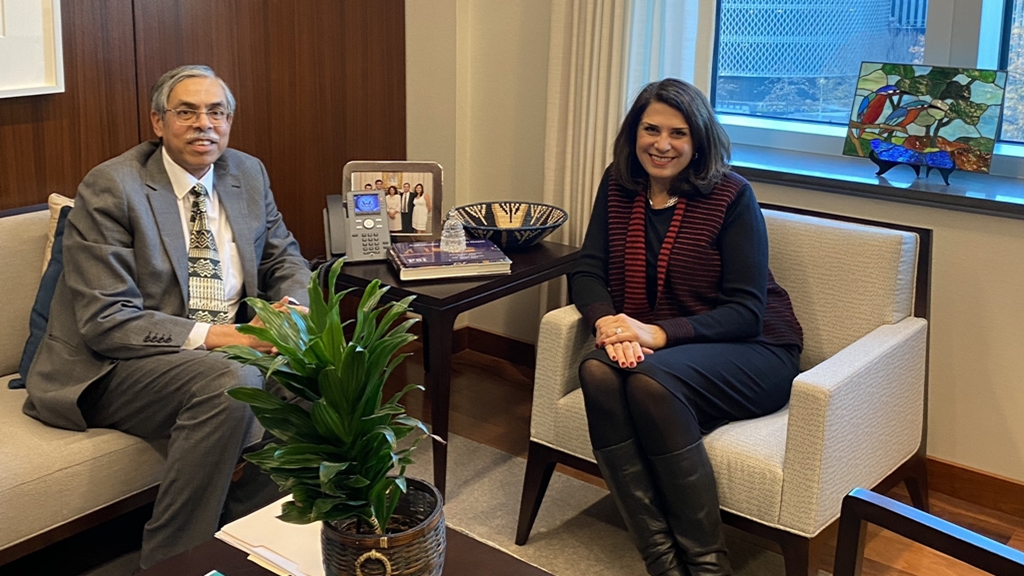
The Political Will of the Government of Myanmar
- 02/09/2019
- 0
By Aman Ullah
Myanmar blamed Bangladesh for the failure of the second attempt to repatriate the Rohingya refugees on August 22. A statement of ministry of foreign affairs of Bangladesh also came on August 25, regarding this. In that statement the ministry stated that:-
“The responsibility to encourage Rohingyas to go back lies entirely with Myanmar, under the deal signed by the two countries. It is Myanmar’s responsibility to create conducive environment in Rakhine through decisive actions and to reduce the trust-deficit of Rohingyas through appropriate measures, including dissemination of authentic information on the ground reality. However, Myanmar’s failure to fulfill its obligations is the reason why the Rohingya did not volunteer to return to Rakhine.”
“The Rohingya want to return to Rakhine but they expressed utter dismay that Myanmar could not report any progress concerning citizenship, rights, and security for their return to northern Rakhine,” it said.
“Myanmar needs to take decisive actions and demonstrate political will to address the core concerns of the Rohingya.”
Is Myanmar has such political will to address the core concern of the Rohingya?
Although Myanmar deals with Bangladesh in January 16, 2018, to repatriate hundreds of thousands of Rohingya Muslim refugees within two years, the following their activities show that the government of Myanmar has neither sincerity nor sound political will for voluntary, safe and sustainable repatriation of Rohingya refugees.
1. Bulldozing of Rohingya villages
According to the statement of Human Rights Watch (HRW), based on satellite imagery recorded between November 11, 2017, and February 19, 2018, the Myanmar government has cleared at least 55 Rohingya villages of all structures and vegetation, most of these villages were among the 362 completely or partially destroyed by arson since August 25, 2017, during the military campaign that sent nearly 700,000 Rohingyas fleeing to Bangladesh.
“Many of these villages were scenes of atrocities against Rohingyas and should be preserved so that the experts appointed by the UN to document these abuses can properly evaluate the evidence to identify those responsible,” said Brad Adams, Asia director of the New York-based global watchdog.
The Myanmar government earlier claimed bulldozing of villages is part of a plan to rebuild villages so that the refugees can live in their place of origin or nearest to their place of origin when they go back under a repatriation deal signed between Bangladesh and Myanmar.
As per the deal, Myanmar will verify the residence of the Rohingya based on residence documents or information provided by them on their houses, nearby schools or mosques in Rakhine.
But, HRW says, bulldozing these areas threatens to erase both the memory and the legal claims of the Rohingyas who lived there.
“The government’s clearing of dozens of villages only heightens concerns about Rohingya families being able to return home,” Adams said.
Moreover, the bigger question is: Where will these people return to, if the repatriation begins at all?
The Rohingya villages which were burned since August 25, 2017, have now been flattened with bulldozers. There is now not a single sign that any human habitation ever existed there. There’s no more landmark, there’s no tree, there’s no vegetation. Everything is wiped away. And everything means everything — their culture, their history, their mosques, the graveyards, and their past — so that these people literally become new settlers with no ties to the land.
Meantime, a raw deal has been thrust down the Rohingyas’ throat in the name of repatriation. Some conditions of the deal are so stringent — the returnees must show national registration cards or documents of residency, something impossible for the Rohingyas to present as they had to hastily flee in the face of killings and torching of houses — that the chance of their return remains bleak. These are tricky conditions as most Rohingyas have no documentation at all.
2. Destroying massacre evidence
The HRW referring the investigation report of the Associated Press and Reuters claimed that, the Myanmar government bulldozing over the site of a Rohingya grave in an effort to destroy evidence of a massacre committed by the military in 2017.
The reported mass grave site in Maung Nu of Buthidaung Township in northern Rakhine was the location of a massacre which took place in August, 2017, according to reports of Human Rights Watch (HRW).
HRW said survivors had told them the army had “beaten, sexually assaulted, stabbed, and shot villagers who had gathered for safety in a residential compound” in the village. Dozens were said to have been killed. Satellite imagery obtained by the HRW showed that Maung Nu had been razed in the aftermath.
The Arakan Project, which uses on-the-ground networks to document abuses against the Rohingyas in Rakhine, provided British newspaper The Guardian with a video of the grave site before its destruction.
The footage shows half-buried tarpaulin bags in a forest clearing, with a decaying leg visibly protruding from one of the bags, said a report of The Guardian on Feb 20, 2018.
Chris Lewa, director of the project, said the bulldozing appeared to be part of an effort to permanently conceal evidence of the grave following the media reports.
“Two of the mass grave sites we know about have appeared in the media on Feb 22, 2018, but one of the other mass grave sites was bulldozed. This means that evidence of the killings is being destroyed.
“Private companies are doing the bulldozing. They come from central Myanmar, not Rakhine,” Lewa said.
“It is clear this is happening under the orders of government,” noted the project director.
Myanmar security forces are accused of mass killings, rapes, making arbitrary arrests, lootings and burning of Rohingya villages in Rakhine State.
In December 2017, the Doctors Without Borders in December last year said at least 6,700 Rohingyas were killed in one month since the security operations began in August 2017.
Amid a global call for probe and justice, Myanmar refused to grant visas to the UN Fact-Finding Mission, preventing it from collecting evidence in the affected areas. The country also blocked access for all independent media and human rights groups to northern Rakhine.
A Myanmar military probe concluded in November that no violations or abuses were committed by security forces, contrary to information reported by the UN, media outlets, and human rights groups.
Following the discovery of a mass grave in the village of Inn Din in late December, the Myanmar military, however, admitted that members of the security forces and Rakhine villagers had unlawfully killed 10 men and violated the “rules of engagement.”
The HRW yesterday said the Myanmar government earlier failed to credibly investigate serious alleged abuses committed by security forces since August 25.
And deliberately demolishing villages to destroy evidence of grave crimes is obstruction of justice, it said as rights bodies demand referring Myanmar’s atrocities to the International Criminal Court.
Surprisingly, as per AFP report mentioned in the Daily Star Dhka dated 2/11/ 2019-09-02, Myanmar said its military was conducting a rare court martial following a probe into alleged mass graves in crisis-hit Rakhine state, two years after a bloody crackdown drove some 740,000 Rohingya into Bangladesh.
In February 2018, an Associated Press report alleged at least five mass graves of Rohingya in Rakhine’s Gu Dar Pyin village — a claim denied by the government, which said the bodies were those of “terrorists”.
But the military’s official website said Saturday that an investigation had found “weakness in following instructions” in Gu Dar Pyin, and that a court martial would “proceed in accordance with the procedures of Military Justice.”But “detailed information cannot be released yet”, he told AFP.
The report described grisly violence at the hands of soldiers and Buddhist vigilantes, who allegedly attacked villagers with guns, knives, rocket launchers and grenades before dumping bodies into pits and dousing them with acid. Estimates from survivors in Bangladesh put the death toll in the hundreds, the report said.
Security forces claimed they were under attack by some 500 villagers, and that they had acted “in self-defence”, according to state-run media last year.
Rights groups say the military has done little to hold anyone accountable for atrocities.
It previously admitted that members of the security forces had helped kill 10 Rohingya in a different Rakhine village in September 2017.
Four officers and three soldiers were sentenced to 10 years in prison with hard labour, but a prison official said in May that they were “no longer in detention”.
Conflict-scarred Rakhine state is virtually sealed off to media, and has in recent months been the site of fierce battles between the military and the Arakan Army — a rebel group claiming to fight for more autonomy for ethnic Rakhine Buddhists.
3. Militarizing the Rakhine state
Myanmar is reportedly “militarizing” Rakhine state and building up bases in former Rohingya neighborhoods, rights group Amnesty International said on March 12, 2018.
In a new brief entitled “Remaking Rakhine State,” Amnesty analysts found that new military bases, helipads and road networks were being constructed on top of villages that were destroyed during the military’s scorched-earth campaign against the Rohingya.
The report uses satellite images that reveal the rapid increase in military infrastructure being built on top of flattened villages. Analysts say the build-up amounts to a land grab.
“What we are seeing in Rakhine State is a land grab by the military on a dramatic scale,” said Amnesty’s Crisis Response Director Tirana Hassan. “New bases are being erected to house the very same security forces that have committed crimes against humanity against Rohingya.”
This Amnesty’s findings follow a report published by Human Right Watch last month, which found that military was bulldozing Rohingya villages that were either burnt down or abandoned last summer.
The reports underscores fears that Myanmar could be setting the land aside for ethnic Rakhine Buddhists and other non-Muslim groups, or that it hopes to erase any evidence of the alleged atrocities that occurred during the crackdown. The report throws into doubt Myanmar’s promise to securely repatriate thousands of Rohingya refugees.
So what will be their homes? Camps are being set up to house them. These camps will be no less than the Gestapo concentration camps.
After the 2012 communal violence, the Myanmar government had put more than 100,000 Rohingya and other ethnic people in camps in Sittew, which have become an “open-air prison” enclosed by barbed-wire barricades and manned by security forces.
No one can move in or out without permission. Illness is not treated and death comes cheap. Time magazine has headlined a story on these camps as “These Aren’t Refugee Camps, They’re Concentration Camps, and People Are Dying in Them”.
About the plan for new camps to be set up for the returnees, rights activists and aid groups fear they will become the blueprint for the wider incarceration of the whole ethnic minority. The Rohingyas are to become the new Jews, the new Gypsies, and the new communists of our time.







